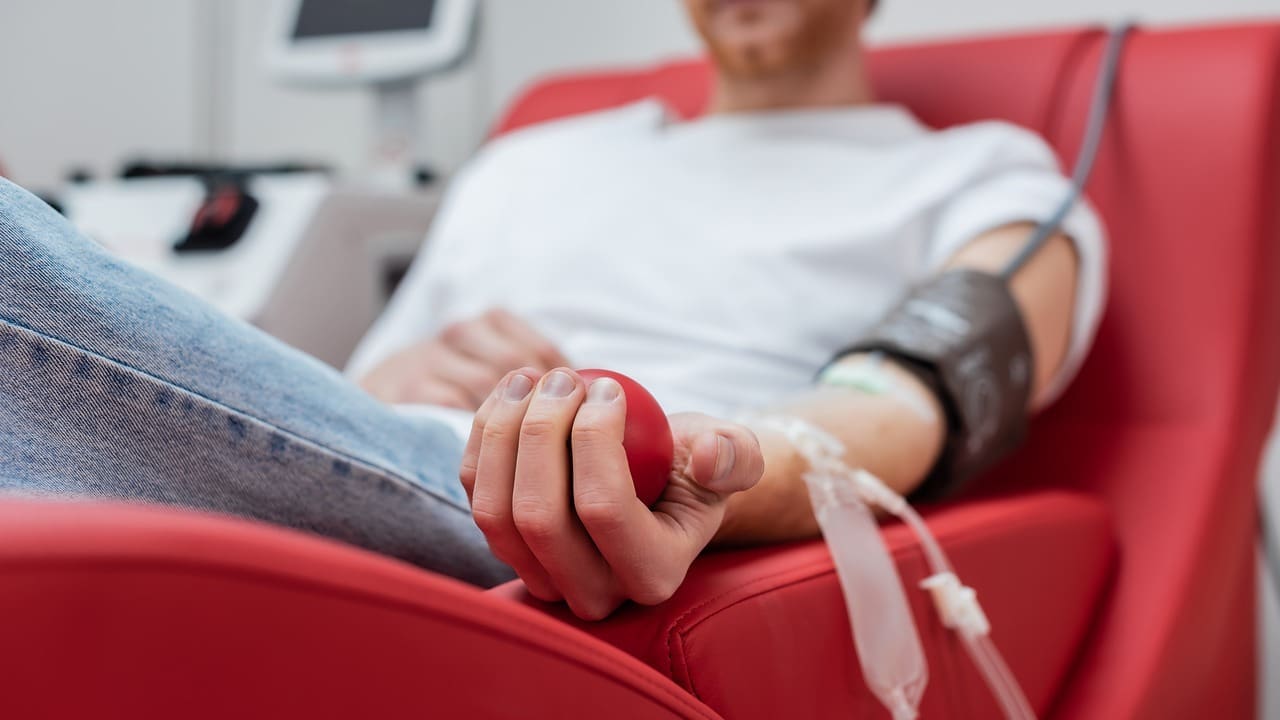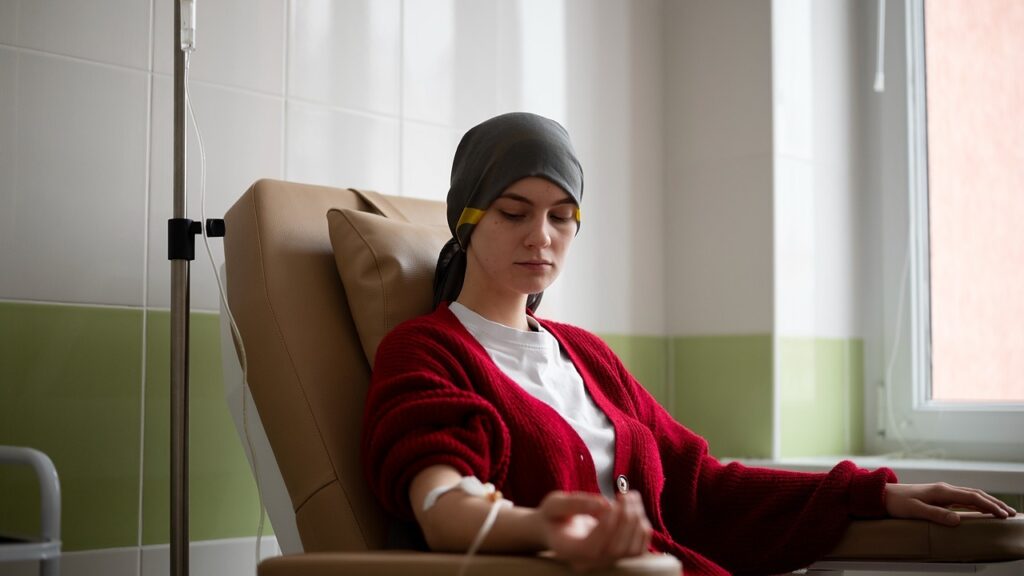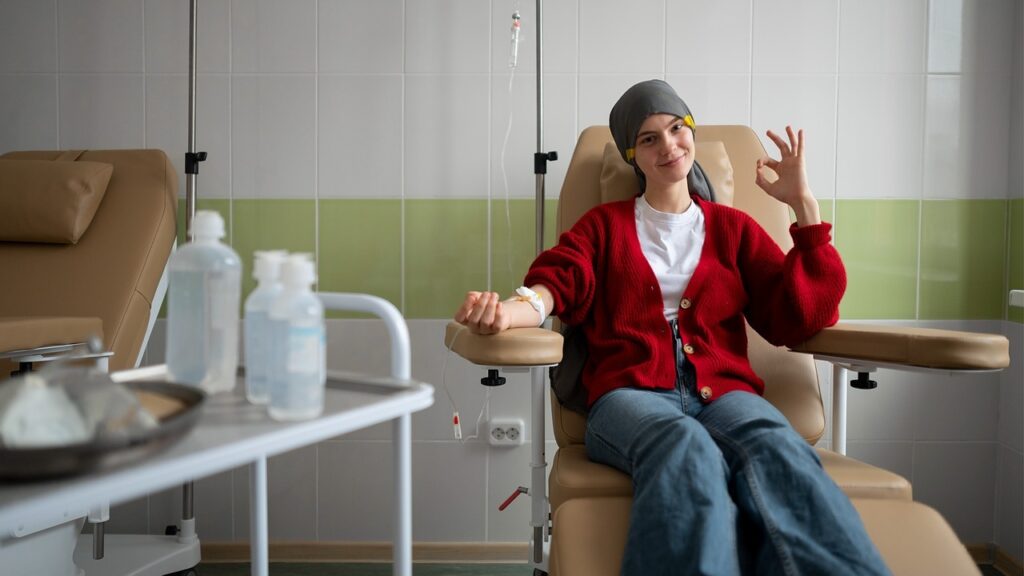Last Updated on November 3, 2025 by mcelik

Getting a leukemia diagnosis can be scary. But knowing about chemotherapy for leukemia is key. Studies show it’s a mainstay in leukemia treatment. New methods aim to make it better for patients.
Liv Hospital puts patients first, combining care with new ideas. This gives adult leukemia patients new hope. We’ll look at the newest in leukemia chemotherapy. You’ll learn about induction and consolidation therapies and what to expect.

It’s important for patients and doctors to know about Acute Myeloid Leukemia (AML). This cancer is aggressive and needs special treatment.
AML is a cancer that starts in the bone marrow and quickly spreads to the blood. It can also go to other parts like the lymph nodes, liver, and spleen. The disease is caused by fast-growing, abnormal white blood cells that block the bone marrow from making normal blood cells.
AML is a group of cancers with different traits and treatments. Things like chemicals, radiation, and some chemotherapy can raise your risk. Being older or having certain genetic disorders also increases your risk.
To diagnose AML, doctors use several tests. They look at the leukemia cells’ genetics to decide on treatment and predict how well you’ll do.
| Cytogenetic Risk Group | Characteristics | Prognosis |
|---|---|---|
| Favorable | Specific genetic abnormalities such as t(8;21), inv(16) | Better response to treatment |
| Intermediate | Normal cytogenetics or other abnormalities not classified as favorable or adverse | Variable response |
| Adverse | Complex karyotype, certain genetic mutations like FLT3-ITD | Poor response to treatment |
Knowing the genetic makeup of AML helps doctors create better treatment plans. This can lead to better results for patients.

Chemotherapy is key in treating Acute Myeloid Leukemia (AML). It targets leukemia cells in different ways. We’ll look at how chemotherapy treats AML.
Chemotherapy for AML attacks fast-growing cells, like leukemia cells. Traditional chemotherapy regimens use several drugs. They aim to hit leukemia cells at various stages.
Targeted therapies are being made to focus on leukemia cells. They try to harm healthy cells less. These can be used alone or with traditional chemotherapy.
AML treatment plans have changed a lot. New drugs and strategies are being added. Low-intensity regimens are for those who can’t handle strong chemotherapy.
Hypomethylating agents and other targeted therapies have helped many patients. They’ve improved treatment results.
| Treatment Approach | Description | Patient Group |
|---|---|---|
| Intensive Chemotherapy | High-dose chemotherapy regimens | Younger patients, fit for intensive treatment |
| Low-Intensity Chemotherapy | Lower-dose chemotherapy regimens | Elderly patients or those with comorbidities |
| Targeted Therapy | Treatments targeting specific leukemia cell mutations | Patients with specific genetic mutations |
The main goal of AML chemotherapy is to get complete remission. This means no leukemia cells are found in the bone marrow.
“The achievement of complete remission is a significant milestone in AML treatment, giving patients a chance at long-term survival.”
Outcomes depend on patient age, health, and genetic mutations. Each case is different.
AML treatment starts with induction therapy. This is a tough regimen that uses many chemotherapy agents to fight leukemia cells. The goal of this first phase is to get the leukemia into remission.
The “7+3” regimen is a common treatment for AML. It involves giving cytarabine for seven days and an anthracycline for three days. This regimen has been used for years because it works well and isn’t too harsh.
The intensity of the treatment depends on the patient’s health and age. Younger, healthier patients often get the “7+3” regimen. But older or sicker patients might get a gentler treatment.
“The choice between high-intensity and low-intensity induction therapy depends on various patient factors, including age, comorbidities, and cytogenetic risk profile.”
After treatment, doctors check how well it worked. They do a bone marrow biopsy to see if leukemia cells are gone. The results can show if the leukemia is in remission, if it’s partly gone, or if it’s not responding to treatment.
| Response Category | Description |
|---|---|
| Complete Remission | No evidence of leukemia cells in bone marrow |
| Partial Remission | Significant reduction in leukemia cells, but not complete clearance |
| Refractory Disease | Leukemia cells persist despite induction therapy |
Knowing how well the treatment worked is key for deciding what to do next. It helps decide if more treatment is needed or if a different approach is better.
Consolidation therapy is key in keeping AML patients in remission. It comes after induction therapy. It aims to get rid of any hidden leukemia cells.
The main goal of consolidation therapy is to lower leukemia cells further. Consolidation chemotherapy starts a few weeks after recovery from induction therapy. The exact timing depends on the patient’s health and treatment plan.
High-dose chemotherapy is a common approach in consolidation. Some get the same chemotherapy as in induction, while others get different drugs. The choice depends on the patient’s risk and health.
For some, stem cell transplantation is part of consolidation, mainly for high-risk AML or relapse. It replaces the bone marrow with healthy stem cells, from the patient or a donor.
Understanding consolidation therapy helps patients make informed decisions about their care.
The way we treat leukemia is changing, thanks to new oral chemotherapy pills. These pills are making treatment easier and less invasive. They keep the treatment effective while making life better for patients.
Targeted therapy tablets are changing leukemia treatment. They target cancer cells without harming healthy ones. Venetoclax is a key example, showing great promise in treating leukemia.
“The use of targeted therapies like venetoclax represents a major breakthrough in leukemia treatment, providing patients with more effective and tolerable options,” says -Dr. a leading hematologist.
Venetoclax paired with hypomethylating agents is a common AML treatment. It’s better for those who can’t handle intense chemotherapy. This combo has led to better results and longer lives for patients.
Oral chemotherapy regimens are convenient and reduce hospital visits. But, they also come with challenges. Ensuring patients take their pills as directed and managing side effects are big hurdles.
Oral chemotherapy pills make life easier for patients. They don’t need to go to the hospital as often. This lets patients keep up with their daily lives without big interruptions.
While oral pills have many benefits, keeping patients on track is key. Patients must stick to their treatment plan for the best results. Doctors are important in teaching patients about the importance of following their treatment and checking in on them.
In conclusion, new oral chemotherapy pills are changing leukemia treatment. As research keeps improving, we’ll see even better and easier treatments for patients.
It’s key to manage AML chemotherapy side effects to improve patient outcomes and quality of life. Chemotherapy for AML can lead to significant side effects. This requires a full range of supportive care.
AML chemotherapy can cause immediate side effects like nausea, vomiting, fatigue, and hair loss. These effects can be tough for patients and make it hard to stick to treatment. We use different medications and care strategies to lessen these effects.
For example, antiemetic drugs help prevent nausea and vomiting. Patients are also advised on nutrition to fight fatigue and keep their health up.
Long-term effects of AML chemotherapy include cardiotoxicity, secondary malignancies, and late effects like infertility. It’s important to monitor these complications closely to catch and manage them early.
| Complication | Monitoring Strategy |
|---|---|
| Cardiotoxicity | Regular echocardiograms |
| Secondary Malignancies | Periodic blood counts and bone marrow biopsies |
| Infertility | Fertility counseling and preservation techniques |
Supportive care is a big part of AML chemotherapy. It aims to ease symptoms and boost patient quality of life. This includes managing medications and nutritional support.
Good medication management means more than just giving drugs. It’s about watching for side effects and interactions. We help patients understand their medications and manage any side effects they have.
Nutritional support is key for patients with AML chemotherapy. A balanced diet can help with side effects and aid in recovery. We suggest talking to a nutritionist for a personalized diet plan.
For more detailed information on AML treatment, you can visit the National Cancer Institute’s page on Adult AML.
AML is complex and needs special treatments for different patients. It’s important to understand the unique needs of each group.
Elderly patients face special challenges like health problems and less energy. We adjust treatments to be effective yet gentle. Key points include:
Patients with big health issues need a detailed plan. We aim to manage their AML and other health problems. We focus on:
For those with AML that doesn’t respond to treatment, we look for new options. This includes:
By tailoring treatments to each patient’s needs, we can better their lives and outcomes.
We measure how well leukemia treatment works by looking at remission rates and survival. These numbers help us see how effective a treatment is. They also tell us what patients can expect during their treatment.
Reaching complete remission is a big win in fighting leukemia. It means the disease is controlled. But, it’s important to know the difference between complete remission and being cured. Complete remission means no leukemia is found, but it doesn’t mean the patient is cured. We keep a close eye on patients to make sure the disease doesn’t come back.
Measurable Residual Disease (MRD) monitoring is key in checking how well treatment is working. MRD is when a few leukemia cells stay in the body after treatment. We use special methods to find these cells and adjust treatment plans. MRD monitoring helps us spot when a relapse might happen early, so we can act fast.
Many things can affect how well a leukemia patient does in the long run. These include age, health, genetics, and how well they respond to treatment. We also look at the type of leukemia and any other health issues. For more on how these factors affect survival, visit cancer.ca.
| Factor | Impact on Long-term Outcomes |
|---|---|
| Age | Older patients may face more challenges due to decreased physical reserve and possible comorbidities. |
| Genetic Factors | Certain genetic mutations can affect how well treatment works and overall outlook. |
| Initial Treatment Response | A good response to initial treatment is a strong sign of better long-term results. |
Leukemia treatment has seen big changes thanks to new research and therapies. We’ve looked at Acute Myeloid Leukemia (AML), its diagnosis, treatment, and the use of chemotherapy.
New treatments like targeted therapy tablets and oral chemotherapy pills have changed how we treat leukemia. These changes offer patients easier treatment plans with fewer side effects. As we move forward, we expect even more personalized treatments and the use of new technologies.
Research is key to finding better ways to help leukemia patients. We hope to see better care and ways to handle treatment side effects. By looking into these areas, we can improve survival rates and quality of life for those with leukemia.
AML is a blood and bone marrow cancer. We treat it with chemotherapy. This targets leukemia cells to aim for complete remission.
The “7+3” regimen is the standard for AML induction. It combines cytarabine and an anthracycline.
Oral pills, like venetoclax, offer targeted therapy. They are more convenient and may have fewer side effects than traditional chemotherapy.
We check for complete remission, survival rates, and measurable residual disease (MRD). This shows how well treatment is working.
Side effects include nausea, fatigue, and long-term issues. We manage them with supportive care, like medication and lifestyle changes.
Yes, we have special treatments for elderly patients. We consider their health, comorbidities, and fitness for chemotherapy.
Consolidation therapy strengthens remission and prevents relapse. It’s after induction therapy and may include more chemotherapy or stem cell transplantation.
Chemotherapy targets leukemia cells to achieve remission and improve survival. Outcomes depend on health and treatment response.
Stem cell transplantation is an option for AML, mainly for high-risk or relapsed/refractory cases.
Chemotherapy duration varies by treatment and patient factors. It includes consolidation therapy and stem cell transplantation needs.
Chemotherapy can achieve remission in many. Cure chances depend on health, disease, and treatment response.
Subscribe to our e-newsletter to stay informed about the latest innovations in the world of health and exclusive offers!
WhatsApp us